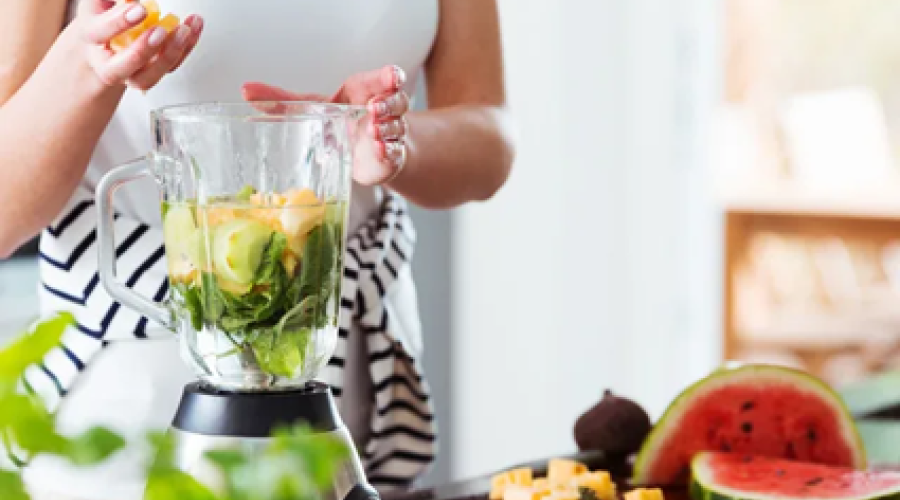
Whether you’re a veteran chef with a dependable machine you’ve had for years, or a novice with a brand new out-of-the-box model, there’s no denying that a few tips could be useful if you want to get the best out of your blender. Some of these you may have heard already, and some of these might be new, but all of them can make a difference in how you use your blender.
So, the next time you’re using one of AFRA’s blenders, you can use these tips and use your blender like a pro.
1. Don’t Just Use It for Smoothies
Yes, we all love smoothies. Who doesn’t? They can be made from anything, they come in all kinds of flavors, and depending on what ingredients you have, they have a wide range of flavors. And blenders are the perfect tool to get that cool, healthy smoothie after a long day.
But your blender can do so much more than blend smoothies. A blender’s blades are durable enough to grind seeds and spices, can make sauces and mayonnaise, and can also crush ice.
Most blenders also have small bases, which help to grind more efficiently than a food processor. This makes them ideal for making batter for crepes, cheesecakes, cookies, and mousse.
So don’t just stick to smoothies alone. Try experimenting with different ingredients and different recipes. You might surprise yourself.
2. Use The Right Order
The order in which you add ingredients to your blender can make a lot of difference. Not only will it keep the blender safe from damage, but you can also get an easier and faster blend.
The optimal order for fast and easy blending is as follows: liquids, powders, solids, and frozen. Pouring in the liquids first allows the blades to move easier. Next, add the powdered ingredients so that they don’t stick to the blender’s lid. Third, add in the soft solids, like bananas and cucumbers. Finally, put in the hard ingredients like frozen fruits, raw vegetables, and ice. These ingredients are heavy and will press the others down to the blade.
3. Don’t Fill It Up to The Very Top
It’s tempting to fill up your blender all the way to the very top. But even a blending novice will tell you that this is a very bad idea. Just like every other appliance or machine, a blender needs a little breathing room to perform effectively.
This is especially important if you’re blending something hot, like a creamy soup. Hot foods create steam, which creates pressure. Trying to blend hot soup will cause the lid to pop off and splatter hot liquid everywhere. Not only will you have a mess on your hands, but you’ll also run the risk of burns.
If you want to avoid an accident, blend your hot ingredients in batches, and make sure to start below the maximum capacity marked on your container.
4. Don’t Be Too Hasty
It’s also tempting to set your blender to full blast right off the bat. But this approach can have consequences later, by putting too much wear and tear on the motor. It also sprays a lot onto the lid and sides of the container, and then you’ll need to scrape them clean if you don’t want any chunky bits in your mix.
It’s best practice to start blending on low speed, then work up to medium, and then high. Not only will it reduce damage, but it also blends everything better. It’s also especially important for recipes like nut milks, which start with solids and turn to liquids.
5. Make Sure to Take a Break
Every machine needs a break so they can cool down, and blenders are no exception. It’s always a good idea to give your blender’s motor a break, especially when blending something challenging, such as pastes, nut butters and dips.
For best results, blend your ingredients in short intervals of about 30 seconds. This is especially important if your blender makes unusual sounds, such as a high-pitch or grinding noise, or if your ingredients spin without blending. If so, stop blending for a while. You can also take this opportunity to add more liquid if necessary.
6. Learn To Clean It Right
Eventually, you’ll need to clean your blender. This is unavoidable; all that blending is going to make your blender jar a sticky mess. If you want to keep your blender functioning, you’ll need to roll up your sleeves and get to cleaning.
Fortunately for you, there’s an easy way to get your blender cleaned.
First, fill your blender jar two-thirds with water. Then add a few drops of dishwashing liquid. Run your blender, with the water and dishwashing liquid, on a high setting for a minute or two, and then rinse thoroughly. Use a sponge to scrub off any food that may stick to the sides.
If you still have some stubborn, grimy stains, then there’s an all-natural solution that can help you. You’ll need to soak the container in a solution of vinegar, lemon juice or baking soda. Wash and rinse again.
If there are still any residual smells, then you’ll need to rinse out the container with a mild solution of water and a small amount of vinegar or vanilla extract.

1 Comment(s)
Very nice blog i am your daily reader i like your tips about <a href="https://electronicschase.com/"> Electronics Gadgets </a> so keep writing and
share your knowledge.
Leave a Comment